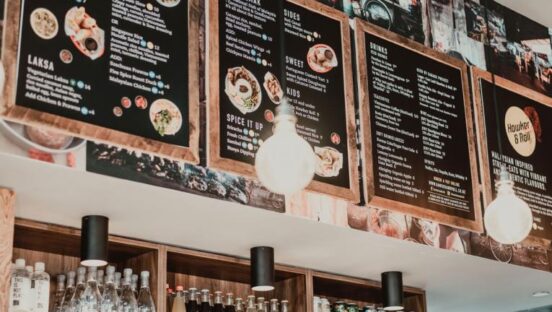In my previous article, I delved into the essence of revenue management (RM) and its objective: to maximize revenue and profit by offering the right product to the right customer at the right time, for the right price, through the right channel. Now, let’s embark on a deeper exploration of the world of RM tools and methodologies, guiding you on how to choose the best approach tailored for your restaurant’s success.
Allow me to share two experiences that shaped my perspective on RM tools. The first occurred around 40 years ago during a short course atop a windmill. Communicating with fellow students, who spoke English as a second language, presented challenges. Requesting a hammer might result in being handed a screwdriver, leading to amusing mishaps. It dawned on me then that effective communication and choosing the right tools for the job are crucial in any endeavor.
The second tale unfolded about 15 years ago in Singapore. I had extensive experience optimizing table mix in restaurants and offered suggestions to enhance their customer capacity. However, they dismissed my ideas, citing a labor shortage. This taught me a valuable lesson: while RM offers an array of tools, the true art lies in selecting the right one for the job. Thus, the RM toolbox was born.
The RM Toolbox Unveiled
The RM toolbox has three shelves: “All-purpose,” “Hot,” and “Cold.” Each shelf holds a unique array of tools, and the key to success lies in knowing when to draw from each.
The All-Purpose Shelf
To decipher which shelf to explore, one must understand the restaurant’s demand patterns. Thriving during super-busy periods entails using the ‘Hot’ shelf’s savvy tools for maximum profit. On the other hand, the “Cold” shelf comes into play during slower times, where the focus shifts to attracting more customers.
But for now, let’s focus on the “All-purpose” shelf, the Swiss Army Knife of the RM toolbox. Its tools wield their power irrespective of your demand levels. Mastering improved menu design, regular menu engineering, strategic pricing, and adept upselling techniques generates revenue regardless of the bustling or quiet times.
Improved Menu Design: Crafting an enticing menu that showcases your profitable items will help increase your revenue.
Regular Menu Engineering: Continuously evaluating your menu’s performance, identifying bestsellers, and optimizing offerings based on customer preferences keeps your menu fresh and lucrative.
Strategic Pricing: Skillful pricing ensures your menu items are both attractive to customers and profitable for your restaurant.
Adept Upselling Techniques: Equipping your staff and technology with upselling tools encourages guests to indulge in add-ons and premium offerings, elevating their dining experience while boosting your revenue.
The All-Purpose shelf is the cornerstone of your revenue management journey, and in my next article, I will delve deeper into each of these essential tools.
The Hot Shelf
Now, let’s look a bit at the “Hot” and “Cold” shelves: The “Hot” shelf showcases tools like channel management, labor scheduling, kitchen efficiency, and targeted marketing. During peak hours, these invaluable tools can be used to help maximize your profit during your busy periods.
Channel Management: Channel management becomes vital for quick-service restaurant outlets as it involves determining the most profitable mix of guests during high-demand periods.
Labor Scheduling: Efficiently scheduling your staff’s shifts based on demand helps ensure that you can handle the busy periods, while also helps you control labor costs.
Kitchen Efficiency: Streamlining kitchen operations and optimizing production flow guarantees swift and impeccable service, even when the restaurant is buzzing with orders and guests.
Targeted Marketing: Using your customer database to attract your more valuable customers during these busy periods.
The Cold Shelf
Conversely, on the ‘Cold’ shelf, we find promotion design, targeted discounting, special offers, and other marketing strategies aimed at attracting customers during slow periods.
Promotion Design: Creating enticing promotions and events during slower times breathes life into your restaurant and entices guests to choose your establishment over competitors.
Targeted Discounting: Thoughtfully applying discounts to attract specific customer segments ensures you maintain profitability while drawing in new business.
Special Offers: Unique and time-bound special offers create a sense of urgency among diners, encouraging them to seize the opportunity to experience your restaurant.
Other Targeted Marketing Approaches: Tailoring your marketing efforts to engage specific customer segments and tapping into new markets during quieter times keeps your restaurant bustling throughout the year.
Where to Begin?
Where should you start your RM journey? The answer lies in acquainting yourself with and utilizing the ‘All-purpose’ shelf tools first. In my upcoming article, I’ll explore these essential tools in detail.
Sherri Kimes is an Emeritus Professor at Hotel School at Cornell and specializes in pricing and revenue management. She has actively involved with teaching, conducting research and consulting in restaurant revenue management for the past 25 years. She is passionate about helping restaurants increase profitability. She can be reached at sk@sherrikimes.com.












